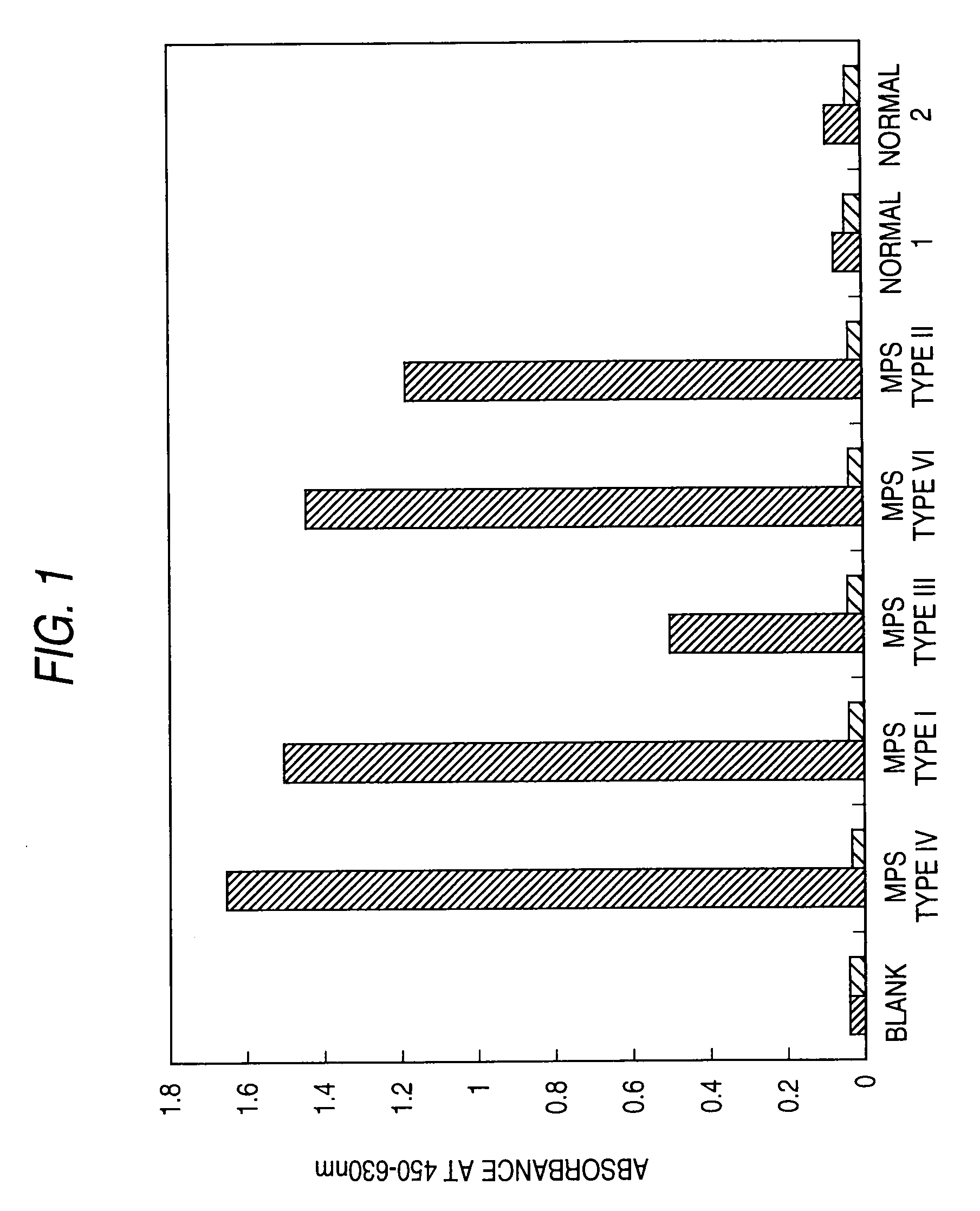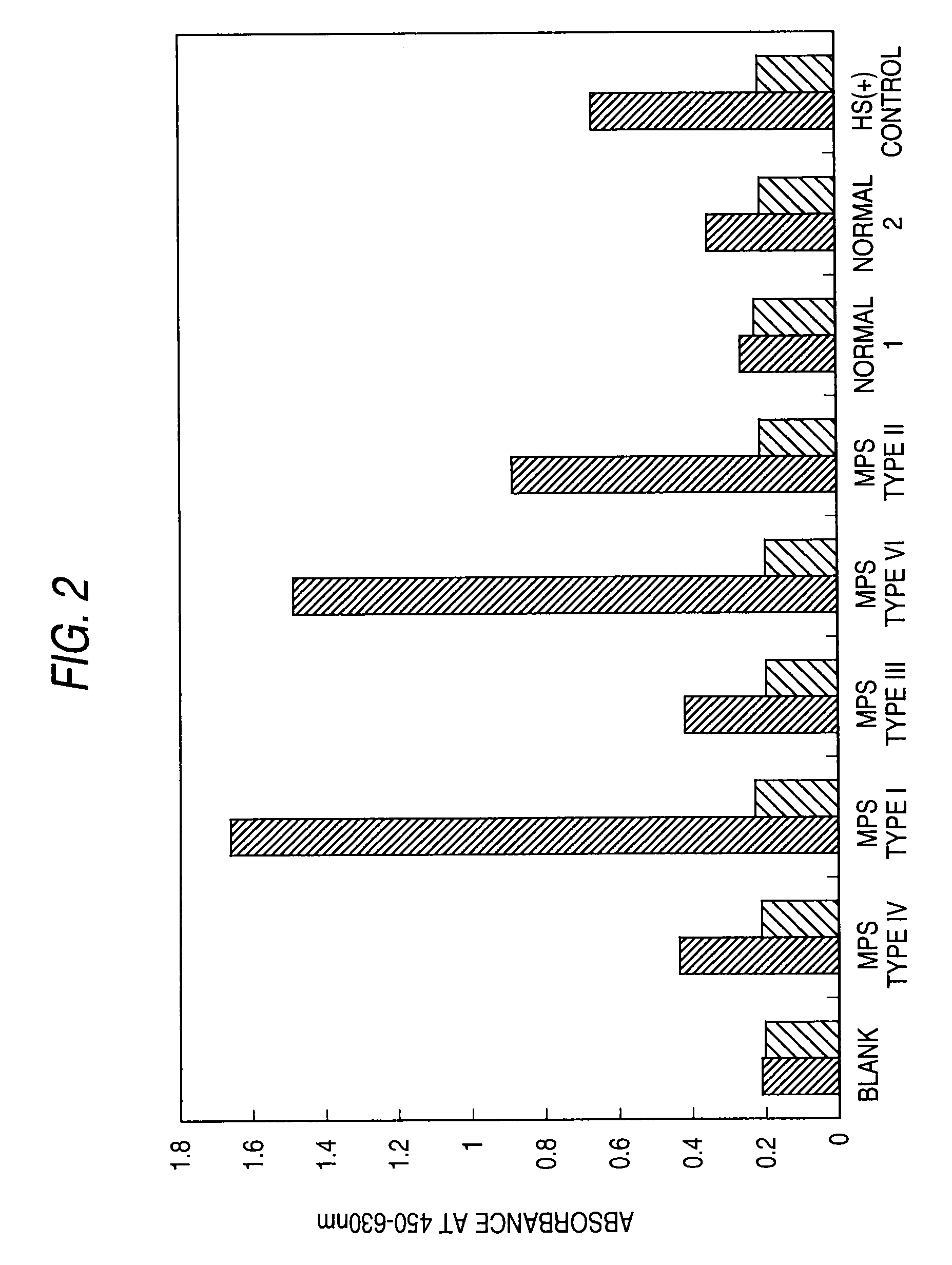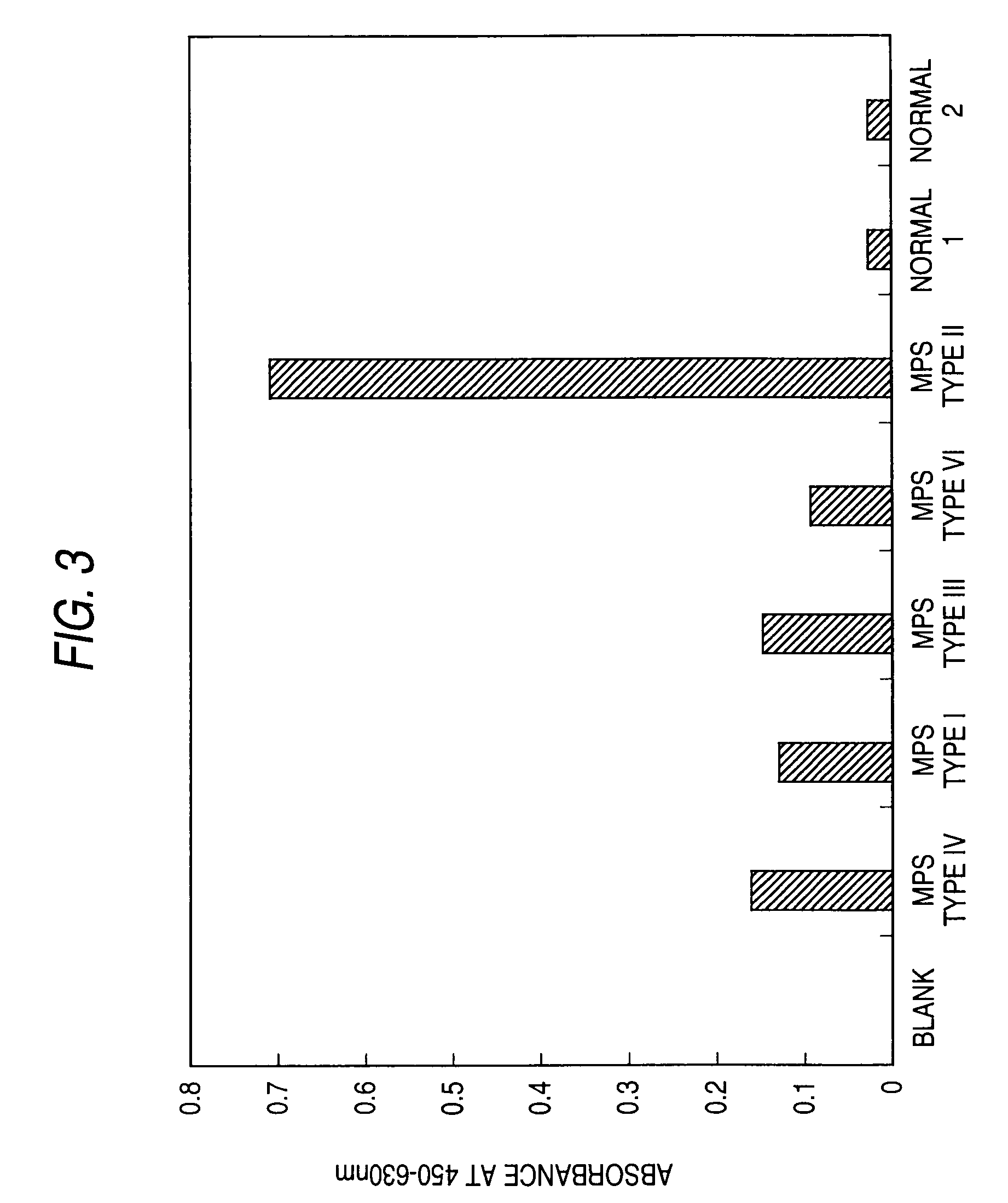Method for detecting lysosomal storage diseases
a lysosomal storage and disease technology, applied in the field of lysosomal storage disease detection, can solve the problems of inaccurate screening methods to be performed before such an expensive diagnosis, and neither discloses nor suggests, and achieves the effects of convenient, sensitive method, and low cos
- Summary
- Abstract
- Description
- Claims
- Application Information
AI Technical Summary
Benefits of technology
Problems solved by technology
Method used
Image
Examples
example 1
[0228]A sandwich assay was performed to detect mucopolysaccharidoses in human urine samples.
(1) The Specimens, Reagents, Etc. Employed in Example 1 were as Follows.
Specimens and Standard Samples:
[0229]The specimens were human urine samples collected from patients suffering human mucopolysaccharidosis types I, II, III, IV, or VI (1 subject each) and healthy humans (humans not suffering mucopolysaccharidosis; 2 subjects).
[0230]The standard GAGs employed were as follows:
[0231]HS (derived from bovine kidney, produced by Seikagaku Corporation):
[0232]This KS is available from Seikagaku Corporation as reagent catalogue code No. 400700, and has the following properties.
Nitrogen Content:
[0233]2.6 to 3.2% (measured by the method described in Z. Anal. Chem., 22, 366 (1883))
Sulfur Content:
[0234]5.0 to 6.0% (measured by the method described in Mikrochim. Acta., 123 (1955))
Uronic Acid Content:
[0235]28.0 to 30.0% (oxynol reaction)[0236]36.0 to 40.0% (carbazole reaction)
Glucosamine Content:
[0237]30...
example 2
[0295]An inhibition assay was performed to detect mucopolysaccharidoses in serum or urine samples from dogs or cats.
(1) Specimens, Reagents, Etc. Employed in Example 2 are as Follows.
Specimens:
[0296]The specimens employed are serum and urine samples collected from mucopolysaccharidosis type IIIB or VII model animals (dogs); mucopolysaccharidosis type I, VI, or VII model animals (cats); and healthy animals (dogs and cats not suffering mucopolysaccharidosis).
[0297]The standard GAG employed is KS derived from bovine cornea (Sigma Co.).
Antibodies:
[0298]The primary antibody employed is anti-KS antibody “5D4” (1 / 20 / 5D4; ICN Immunobiologicals). The secondary antibody employed is horseradish-peroxidase-bound anti-mouse IgG (H+L) (Pierce Co.).
Antigen-Immobilized Plate:
[0299]An antigen-immobilized plate (i.e., a plate to which KS is immobilized) was prepared as described below.
[0300]0.2 U Chondroitinase ABC (produced by Seikagaku Corporation) was added to 1 mg KS solution (bovine-cornea-deriv...
example 3
Mass-Scale Detection of Mucopolysaccharidoses
[0314]An attempt was made to detect mucopolysaccharidoses in a mass scale by the sandwich method using human urine or plasma as samples. The method is the same as the “(2) Detection of mucopolysaccharidoses through measurement of KS” in Example 1.
[0315]The results of using urine as samples (values corrected for creatinine (Cre) concentration) are shown in FIG. 5, and the results of using plasma in FIGS. 6 and 7.
[0316]In FIG. 5, abbreviations show the following results:[0317]Control: result of healthy human (n=67);[0318]All MPS IVA: result of all samples of mucopolysaccharidosis type IVA human (regardless of age, n=78);[0319]Severe: result of mucopolysaccharidosis type IVA (severe type) human (n=54);[0320]Milder: result of mucopolysaccharidosis type IVA (mild type) human (n=11);[0321]Cont 0-5: result of healthy human (from 0 to less than 5 years; n=21)[0322]IVA 0-5: result of mucopolysaccharidosis type IVA human (from 0 to less than 5 year...
PUM
| Property | Measurement | Unit |
|---|---|---|
| temperature | aaaaa | aaaaa |
| temperature | aaaaa | aaaaa |
| concentration | aaaaa | aaaaa |
Abstract
Description
Claims
Application Information
 Login to View More
Login to View More - R&D
- Intellectual Property
- Life Sciences
- Materials
- Tech Scout
- Unparalleled Data Quality
- Higher Quality Content
- 60% Fewer Hallucinations
Browse by: Latest US Patents, China's latest patents, Technical Efficacy Thesaurus, Application Domain, Technology Topic, Popular Technical Reports.
© 2025 PatSnap. All rights reserved.Legal|Privacy policy|Modern Slavery Act Transparency Statement|Sitemap|About US| Contact US: help@patsnap.com



